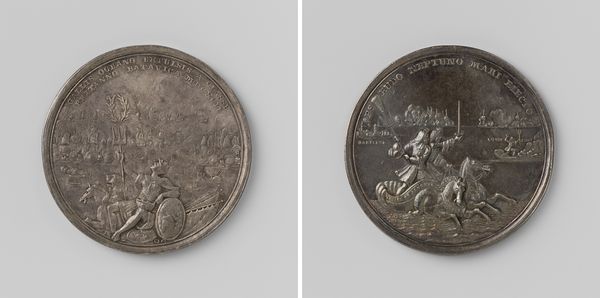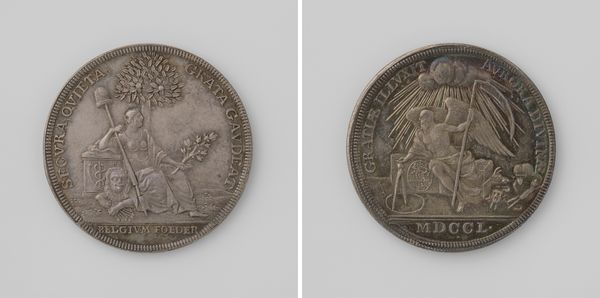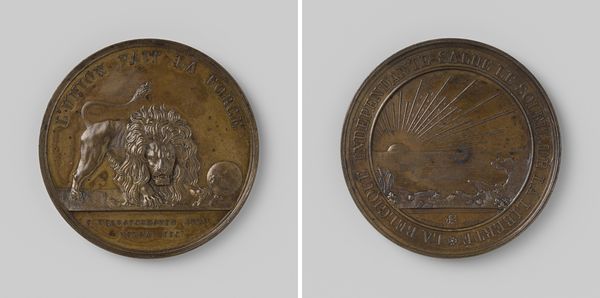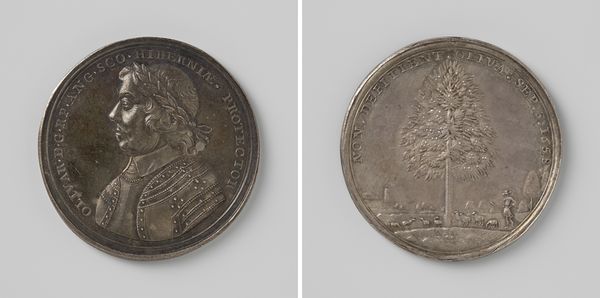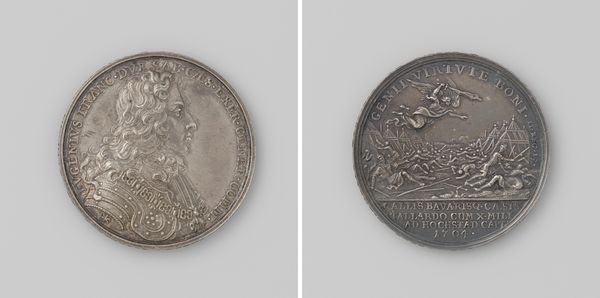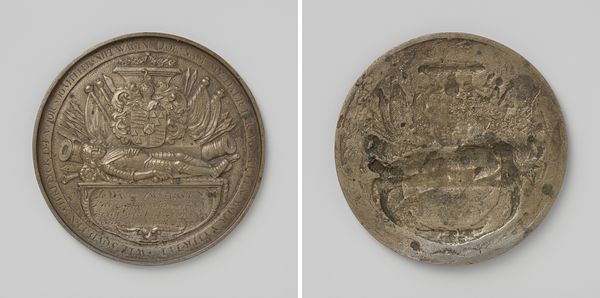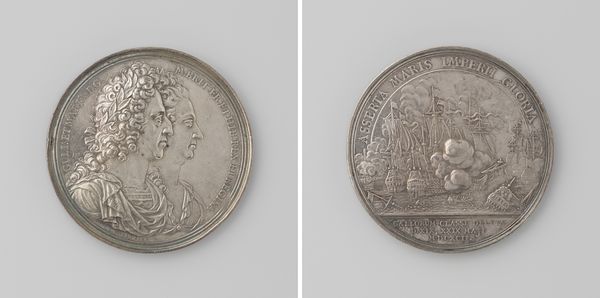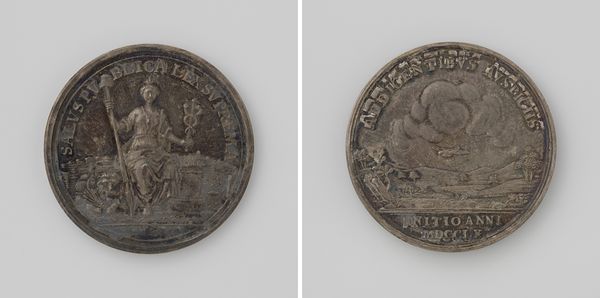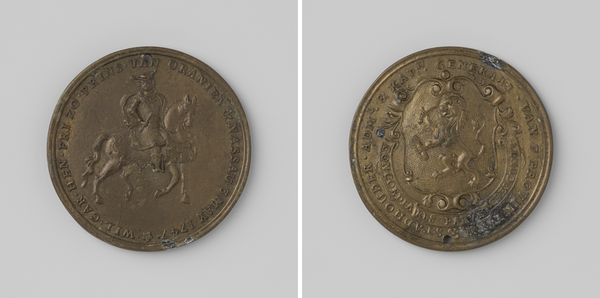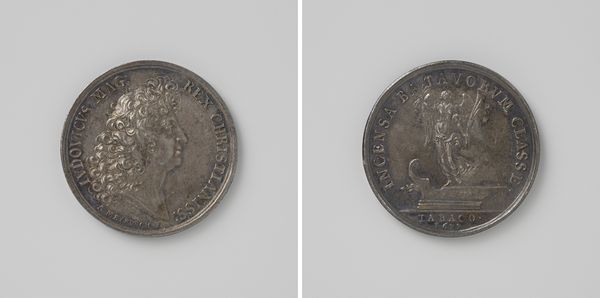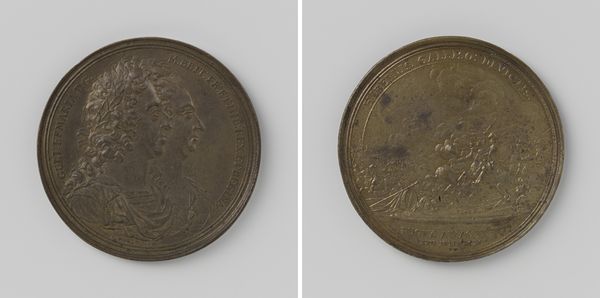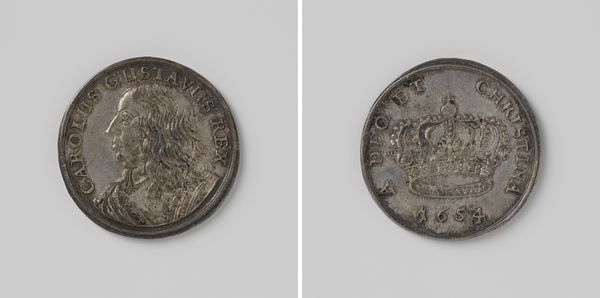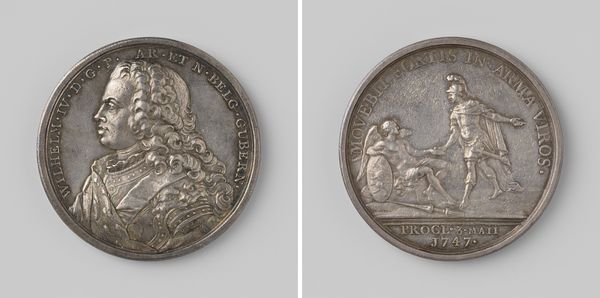
Huwelijk van Frans Stephen, hertog van Lotharingen en Maria Theresia, aartshertogin van Oostenrijk 1736
0:00
0:00
metal, relief, engraving
#
portrait
#
baroque
#
metal
#
relief
#
history-painting
#
engraving
Dimensions: diameter 4.4 cm, weight 282 gr
Copyright: Rijks Museum: Open Domain
Editor: So this piece is a metal relief engraving commemorating the marriage of Francis Stephen, Duke of Lorraine, and Maria Theresa, Archduchess of Austria, in 1736. It's currently housed in the Rijksmuseum. It’s striking how much detail the artist, Georg Wilhelm Vestner, managed to achieve on such a small surface. What visual elements stand out to you in this work? Curator: The most immediately noticeable characteristic is its circular format. This compositional choice forces a focus on the internal relationships of the forms. The arrangement of the portraits and heraldic symbols reveals a sophisticated understanding of spatial organization and semiotic deployment of signs of power. Note the interplay between the symmetry of the back and the asymmetry of the front. How might we read that relationship? Editor: Hmm, interesting. I initially thought of it as a simple commemorative object. So, would you say the circular composition impacts the interpretation? Curator: Absolutely. The tondo format, often associated with Renaissance medals, evokes ideas of completion and unity, subtly reinforcing the idea of marital harmony. Moreover, the intricate engraving technique—the play of light and shadow—contributes to the work’s visual dynamism. Consider the material itself: the choice of metal. Editor: It adds to that sense of timelessness, perhaps, and definitely elevates the status of the event. It also highlights the relief. How does that impact the reading of the work? Curator: The relief creates depth, quite literally. It also alludes to a different type of temporality: that of sculpture. Finally, the use of light is particularly notable. Vestner masterfully uses gradations to emphasize the three-dimensionality of the portraits, thereby emphasizing the textures. Editor: I hadn't considered how the material itself contributes so much to the reading of the work. I'll definitely pay more attention to that going forward. Curator: Indeed, attending to the formal elements enhances our comprehension. Looking beyond mere representation uncovers deeper meaning.
Comments
No comments
Be the first to comment and join the conversation on the ultimate creative platform.
